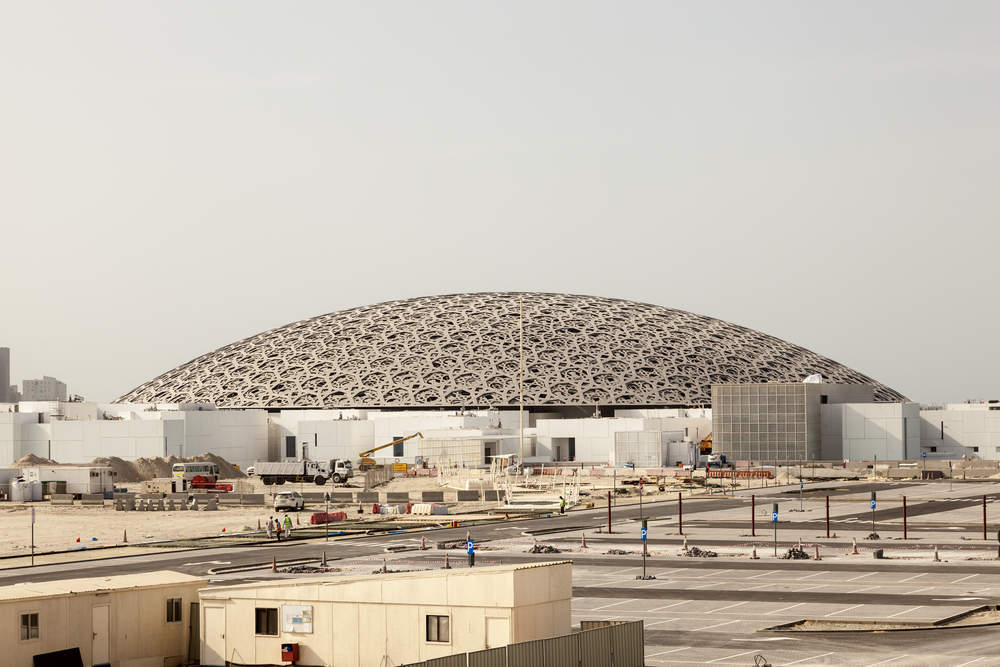
Ten years after the initial announcement of the opening of the Louvre Abu Dhabi, the Arab world’s first universal museum is set to open this Saturday.

Access deeper industry intelligence
Experience unmatched clarity with a single platform that combines unique data, AI, and human expertise.
Designed by French architect Jean Nouvel and located on the Saadiyat Island, the Louvre Abu Dhabi is described as “the result of an unprecedented initiative that laid the groundwork for a new type of cultural collaboration of unparalleled scope between two countries”, born out of an intergovernmental agreement between France and the United Arab Emirates (UAE) signed in March.
The museum was designed to reflect the common history of humanity across different cultures and civilisations, with a focus on bridging the gap between Western and Eastern art.

US Tariffs are shifting - will you react or anticipate?
Don’t let policy changes catch you off guard. Stay proactive with real-time data and expert analysis.
By GlobalDataThe UAE is leasing the Louvre brand for $463m for 30 years and in return 300 works of art will be lent by several French museums.
Amongst the loans will be Leonardo da Vinci’s La Belle Ferronniere from the Louvre, Bonaparte Crossing the Alps by Jacques-Louis David from Versailles, and a Vincent Van Gogh self portrait from the Musée d’Orsay.
French museum experts will advise the UAE on which artworks to acquire and help organise exhibitions for the coming 15 years.
A museum city
With 8,600 square metres of exhibition space and total area of 64,000 square metres, the so-called museum city has a price tag of €600m ($695m) according to estimates.
However, as a result of funding problems, there were several delays to the opening date — first set for 2012, then pushed back to 2013 then 2015 — and the initial figure is expected to rise.
The museum’s mix of collections — spanning international and local, and ancient and contemporary — are thought to make it unique.
Whilst most museums offer a classification by style, technique, school and materials, the Louvre Abu Dhabi uses arrangements that highlight universal themes and common influences among civilisations.
The museum management said:
The Louvre Abu Dhabi’s unique exhibition design explores the connections between civilisations and cultures that may, at first, appear to be far separated by time and geography. Visitors will be guided through a chronological and theme-based display, traversing different periods and civilisations. The display picks out universal themes and common influences to illustrate the similarities that grow out of a shared human experience, beyond any geographical, historical, or cultural boundaries.
The vast majority of the works will tell the ancient history of civilisations, cultures and religions, for example, a sheet of the Blue Koran, a Gothic Bible and a Pentateuch, along with Buddhist texts or Taoists.
Mohamed Khalifa Al Mubarak, chairman of the Abu Dhabi Tourism and Culture Authority, said:
The Louvre Abu Dhabi symbolizes the vision of a tolerant and open nation to diversity.
The Louvre Abu Dhabi wants to be a place “working for dialogue between East and West” and will give visitors the opportunity to discover shared influences and astonishing connections between different cultures around the world according to FranceInfo.
The opening of the Louvre Museum was part of Abu Dhabi’s so-called soft power strategy, in which they hope to place more of a focus on culture, education and international tourism as they find energy resources dwindling.
The Louvre will play a key role in the strategy, encouraging creativity in the hope of boosting economic diversification and the development of a modern and active society.







